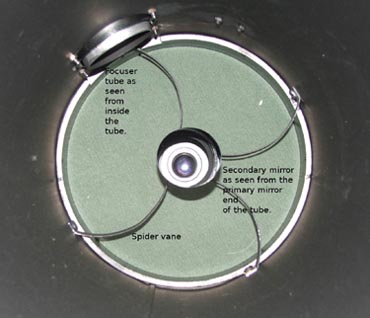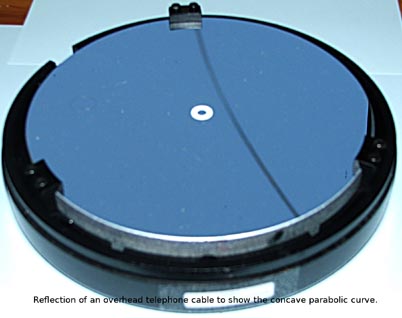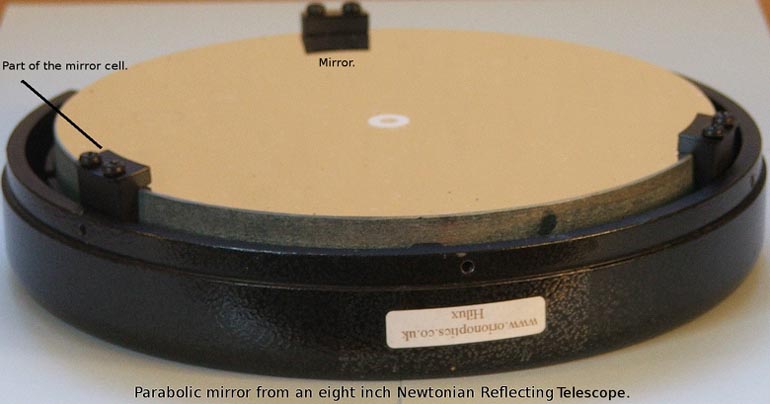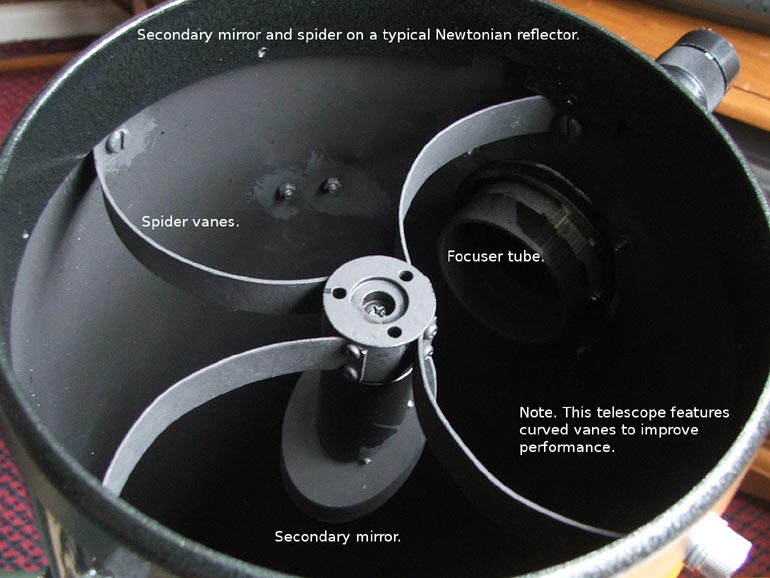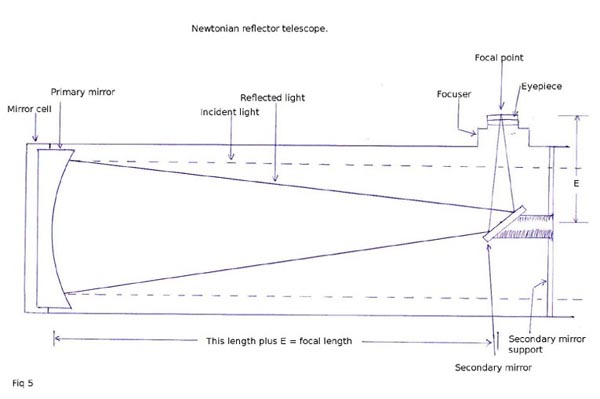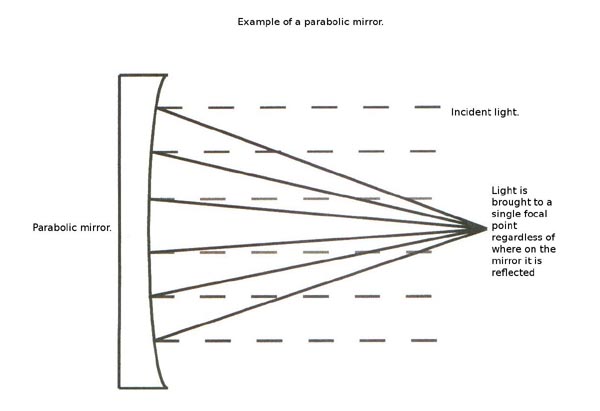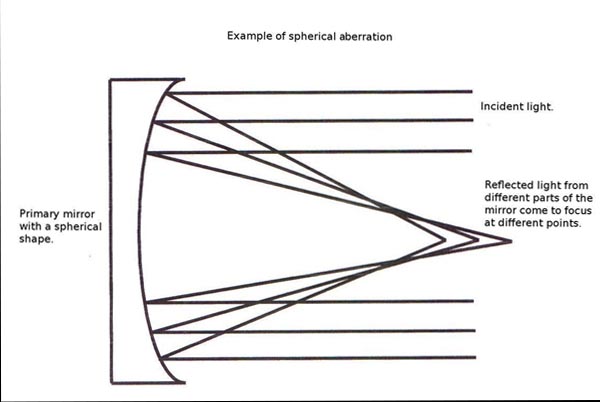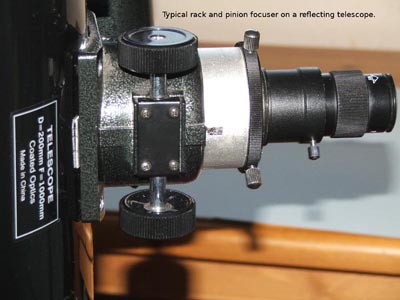
As light enters the a reflector it travels down the tube until it encounters the primary mirror, at the bottom of the tube. The curved shape of the primary mirror, more correctly known as a parabolic curve, causes the rays of light to converge in a the same way as the objective lens in a refractor. In fact the primary mirror is not unlike the magnifying side of a shaving mirror. The light is then reflected back up the tube until it encounters the flat or secondary mirror.
Because this secondary mirror is mounted at 45 degrees to the primary mirror, the light is then reflected out through the side of the tube and into the focuser, where the eyepiece is positioned. This then is our basic Newtonian Reflector.
Just as the refracting telescope might suffer the unwanted effects of chromatic aberration, reflecting telescopes can also suffer a form of aberration, known as "spherical aberration". Sounds confusing? Please read on, I will do my best to explain.
